As you will know from your kitchen at home, having a clean and tidy workspace before you commence any food handling is not only more efficient but is also more hygienic because it limits the chances of cross-contamination and ensures the expediency of correct food storage.
By the end of this topic, you will understand:
- The importance of cleanliness in preventing food-borne illness
- Obligations for managing pests and vermin
- How food storage and safety are related
- The importance of having a system around food disposal and waste
- The importance of the proper use of equipment in food handling areas
Note
The relevant Standard for dealing with cleaning and sanitising in food business is:
The cleanliness of food handling areas is one key aspect of minimising the risk of food-borne illness. This includes ensuring your work area is clean (benches, tables, floors, etc.) as well as the equipment (kitchen appliances, ovens, etc.), and utensils you use. Food-borne illnesses can be picked up via unsanitary items when they come into contact with food, or via dirt and dust from the environment where the food is prepared or served. Airborne contaminants, such as dust, bacteria, mold and yeast are a threat to the safety of food. Particles can get into food and cause health problems for those who ingest the food.
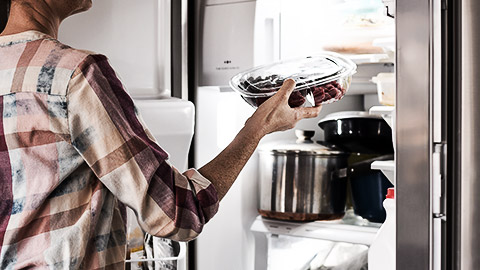
To assist in keeping food handling areas clean, the food business, including an early childhood service handling food, should ensure that sufficient cleaning equipment (for example chemicals, cloths, mops, vacuums, etc.) is available and on hand. This will enable any food preparation and serving equipment, as well as surfaces, floors, and any other objects to be thoroughly cleaned.
Work areas should be cleaned regularly to avoid contamination and pests. This can be achieved by storing food in its appropriate place (for example the fridge, freezer, cupboard, or shelf), keeping equipment and utensils tidy, and maintaining a clear bench and floor space. All equipment used to prepare food, or that comes into contact with food, should be cleaned thoroughly using an appropriate cleaning solution. Benchtops should be wiped regularly and dishes should be washed in a dishwasher or by hand in hot soapy water.
The layout of the food preparation area should also be considered in a way that will allow for sufficient and easy cleaning.
The early childhood service should also ensure that the cleaning equipment can be stored adequately. Ideally, this will mean that the equipment is stored away from food items in its own designated area (for example a separate cupboard).
Cleaning, sanitising and maintaining
The following 2-minute video explains how you need to properly disinfect surfaces:
Single-use items
These include items that should be used only once such as:
- paper cups
- straws
- disposable gloves
- take away containers, etc.
The Standard requires the business to make sure that single-use items:
- do not contaminate food
- do not pass on any illness; and
- are not reused.
The main ways to make sure that food is kept safe using single-use items include:
- protecting the single-use item with packaging or a container
- using dispensers that will allow only the only person who will use the single-use item to touch it
- storing the single-use item away from chemicals, in food storage areas
- throw away the single-use item if it has been used, damaged, touched or in any way contaminated.
If the single-use item is not contaminated, such as straws or take-away containers, it is safe to throw them in the recycling bin. However, contaminated items, such as disposable food safety gloves that were used to work with raw meat, must be placed in a sealed bag and thrown in the rubbish bin or designated area for disposal.
High-touch surfaces
What are high-touch surfaces? High-touch surfaces are objects that many people come in contact with numerous times throughout the day. Some of the most common surfaces that require constant disinfection include:
- Door handles and handicap access buttons
- Elevator buttons
- Light switches
- Stair railings
- Chair handles
- Reception desks
- Sink faucets and kitchen cupboard handles
Cleaning and hygiene
Remember the following:
- Keep benches and tables clean and dry. Wipe down and dry every time food is prepared or served from them.
- Keep kitchen equipment and tools clean and dry. Clean after each use.
- Only use clean plates, cups, utensils, chopping boards etc. Wash after each use.
- Keep tea towels clean and dry and wash them regularly. After using a tea towel to dry dishes, hang it up to dry. If using tea towels to wipe up spills, wash after each use.
- Keep tea towels clean and dry and wash them regularly. After using a tea towel to dry dishes, hang it up to dry. If using tea towels to wipe up spills, wash after each use.
- Clean sponges, scourers & dish brushes after each use. Rinse them in hot water and wring out. Alternatively, put them on a hot wash in the dishwasher. Leave to dry before using again.
- Discard sponges, scourers & dish brushes when they show signs of permanent soiling.
- For spills on the floor or messes from pets, it’s best to use a single-use paper towel.
- Don’t let animals into the kitchen or on benchtops and eating areas, if possible. Keep animals’ feeding bowls out of the kitchen.
Cleaning worktops and chopping boards
The following 3-minute video explains how to clean chopping boards effectively:
Cleaning food
Raw meat
You should not wash raw meat. Washing meat under a tap can splash bacteria onto your hands, clothes, utensils and worktops. Washing raw meat, such as chicken, can spread harmful bacteria like campylobacter. Thorough cooking will kill any bacteria present.
Rice
There is no need to wash rice as any bacteria will be killed as the rice is boiled. You do need to make sure though to always store rice in air-tight containers to prevent pantry moths or other pests from getting in.
Fruit and vegetables
Remember to wash fruit and vegetables with water before you eat them. This is to make sure that they are clean and harmful bacteria can be removed from the outside. You should wash them under a running tap, or in a bowl of fresh water, making sure to rub their skin under the water. You can start with the least soiled items first and give each of them a final rinse.12
Peeling vegetables can also remove more bacteria, so this is an additional precaution you can take when intending to eat root vegetables raw.
Cleaning products for benchtops and surfaces
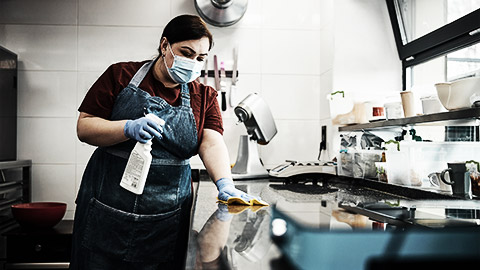
A wide range of products is available for cleaning and disinfection. You should read the manufacturer's instructions carefully to ensure that the product is suitable for food surfaces and that you are using it correctly. To effectively kill any harmful bacteria properly, you should make sure you:
- leave the cleaning product on the surface for the time specified in the instructions
- read the manufacturer's guidance to check if it needs to be diluted before use
Cleaning products will be classed as detergents, disinfectants or sanitisers:
Detergents
Detergents clean the surface and remove grease, but they do not kill bacteria.
Disinfectants
Disinfectants kill bacteria. They should be used on a visibly clean surface. They do not work effectively if the surface is covered in grease or visible dirt. It is important that you follow the specified contact times for the products to be effective.
Sanitisers
Sanitisers can be used to clean and disinfect as part of a two-stage approach. First, use the sanitiser to clean the surface. This will remove any:
- dirt
- food
- grease
You should then re-apply the sanitiser to the visibly clean surface and leave for the required time. This will disinfect the surface.
In many early childhood services, children will eat food during meal breaks in their classroom. It is important to ensure that the staff and educators within each classroom comply with any food preparation and handling procedures. They should always maintain a clean and hygienic space for the children to eat their food. This means that cleaning solutions, wipes and other tools will need to be easily accessible to each classroom, but also stored appropriately to ensure the children cannot access them. Ideally, all cleaning instruments would be kept together in a central location that is available to staff but inaccessible to children. However, a central location may not always be practical because educators are often unable to leave the room at short notice. Therefore, a more practical solution may be that cleaning equipment is stored in a lockable cupboard within each classroom.
Any contaminated items, such as dirty clothes, linen, towels and any other soiled material, should be kept separately in a designated area. Ideally, the storage place will be a designated area that is contained and covered, and will be located away from food preparation and serving areas so as to not contaminate food. This would be in a central location such as a laundry, where clean and dirty instruments are kept separately and labelled clearly. Again, a central location may not be practical in all settings, and therefore, these items may need to be stored within individual classrooms.
Children should not have access to these items, and therefore, they should be stored in a lockable cupboard with the area labelled clearly so that it is obvious the items are dirty or contaminated. Dirty and contaminated items should be cleaned regularly, and at least daily.

The following information is an excerpt from Safe Food Australia (Division 5 — Cleaning, sanitising and maintenance):
20 Cleaning and sanitising of specific equipment
- A food business must ensure the following equipment is in a clean and sanitary condition in the circumstances set out below:
- eating and drinking utensils — immediately before each use; and
- the food contact surfaces of equipment — whenever food that will come into contact with the surface is likely to be contaminated.
In subclause (1), a ‘clean and sanitary condition’ means, in relation to a surface or utensil, the condition of a surface or utensil where it:
The following information is an excerpt from Safe Food Australia (Division 4 — Health and hygiene requirements; Subdivision 1 — Requirements for food handlers):
14 Health of food handlers
- A food handler who has a symptom that indicates the handler may be suffering from a food-borne disease, or knows he or she is suffering from a food-borne disease, or is a carrier of a food-borne disease, must, if at work:
- is clean; and
- has had applied to it heat or chemicals, heat and chemicals, or other processes, so that the number of micro-organisms on the surface or utensil has been reduced to a level that:
- does not compromise the safety of the food with which it may come into contact; and
- does not permit the transmission of infectious disease.
- report that he or she is or may be suffering from the disease, or knows that he or she is carrying the disease, to his or her supervisor, as the case may be;
- not engage in any handling of food where there is a reasonable likelihood of food contamination as a result of the disease; and
- if continuing to engage in other work on the food premises — take all practicable measures to prevent food from being contaminated as a result of the disease.
- A food handler who suffers from a condition must, if at work:
- if there is a reasonable likelihood of food contamination as a result of suffering the condition — report that he or she is suffering from the condition to his or her supervisor; and
- if continuing to engage in the handling of food or other work — take all practicable measures to prevent food being contaminated as a result of the condition.
- A food handler must notify his or her supervisor if the food handler knows or suspects that he or she may have contaminated food whilst handling food.
Hygiene and cleaning policy
All early childhood services will have a hygiene and cleaning policy. This is an example of a hygiene and cleaning policy.
Food poisoning
Food poisoning can be caused by bacterial, physical or chemical contamination of food and equipment. However, bacterial contamination is the most common cause of food poisoning.
Some foods can have a higher risk of causing food poisoning and need to be handled with special care by everyone. The risks can be even more serious for people with lower immunity including pregnant women, children younger than 5 years and people over 65 years with certain underlying conditions. Some of the food that requires special care are:
Foods that include:
- Eggs
- Fresh fruit and vegetables
- Fresh noodles
- Poultry
- Raw meat
- Recreational harvest of seafood
- Rockmelons
- Roquefort cheese
- Sprouts
You can read more about special food care here.

In an early childhood service, you may be required to handle and prepare bottles for children containing breastmilk, formula or cow’s milk, depending on the requirements of each child. The following information is an excerpt from the eXtension Alliance for Better Child Care (EABCC) on the safe handling and preparation of bottles13 :
Safe handling of infant bottles in child care:
- breast milk in the freezer until feeding time and then thaw it in the refrigerator or under cool, running water. Do not warm bottles on the stove, which may cause the milk to curdle.
- Wash your hands carefully with soap and water before preparing any bottle. Do not touch nipples with your fingers.
- Do not warm bottles in the microwave. Uneven heating may cause hot spots, which can burn a baby’s mouth. Cover all bottles during storage.
- Prepare commercial infant feedings according to instructions. Add the right amount of water to ensure that the infant gets adequate calories and nutrients.
- Throw away any breast milk or formula left in a bottle after feeding. If too much seems to be going to waste, record the amount usually used and prepare a smaller amount. You can also ask parents to save breast milk in smaller bottles.
- Clean reusable bottles and nipples thoroughly after each use. Bottles and nipples may be washed in a dishwasher in boiling water or washed by hand and boiled for five minutes before refilling.
Note
The relevant Standard for dealing with pests in the food business is:
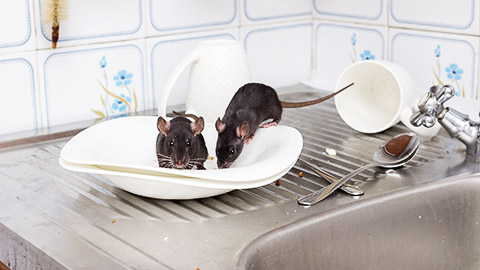
Pests and vermin are a risk to food handling practices due to the micro-organisms they may carry, leading to potential illness.
Standard 3.2.2 sets out that it is the responsibility of the business to prevent pests from being at the workplace, and food transport vehicles, by undertaking all reasonable courses of action.
If pests are detected in your food handling workplace, it is important that you let management know immediately so that appropriate controls can be applied. These controls will be set out in a pest management plan, and may include things such as setting out bait (away from food products so that food cannot be contaminated), or, seeking professional assistance to eradicate the pests.
The following 2-minute video explains how you can keep a commercial kitchen free of pests.
Note, that kitchens of children’s education and care services are also classified as commercial kitchens. Kitchens in domestic premises, such as in a family day care service, are usually not expected to have to withstand the same amount of use and cleaning as commercial premises and are generally not designed to commercial-standard specifications14.
Read
This article by the Australian Institute of Food Safety explains how you can keep a commercial kitchen clear of pets.The following information is an excerpt from Safe Food Australia (Division 6 — Miscellaneous):
24 Animals and pests
- A food business must:
- subject to paragraph
- not permit live animals in areas in which food is handled, other than seafood or other fish or shellfish;
- permit an assistance animal only in dining and drinking areas and other areas used by customers;
- take all practicable measures to prevent pests entering the food premises; and (d) take all practicable measures to eradicate and prevent the harbourage of pests on the food premises and those parts of vehicles that are used to transport food.
- (2) In subclause (1), ‘assistance animal’ means an animal referred to in section 9 of the Disability Discrimination Act 1992 of the Commonwealth.
FSANZ provides the following tips as examples for controlling pests:
- Enclose food preparation areas as much as possible.
- Only prepare low-risk foods in open areas (e.g., coffee).
- Store and display food under covers, behind protective guards or in enclosed display cabinets/fridges.
- Keep uncovered food away from pest control devices.
- Provide and maintain mesh screens on windows, doors and other openings and install weather strips at the base of doors.
- Provide self-closing doors, double doors or air curtains at door entries.
- Keep doors closed when not in use.
- If you have an open-front food business, only have small server openings that can be opened and closed.
- Make sure there are no holes, cracks or gaps in ceilings, walls and floors—including sealing around service pipes, wires, etc.
- Keep food and waste in sealed containers and regularly remove rubbish.
- Use pest repellent and trap devices (e.g., at entrances and exits).
- Keep food premises and transport vehicles clean and tidy.
- If your business can’t manage pests properly you should call in professional help.
These tips, and further information is available in the Controlling Pests document, developed by Food Standards – Safe Food Australia.
Potential kitchen pest dangers

Cockroaches
There may be nothing grosser than a cockroach scurrying into a corner or under the fridge as you enter the kitchen - and for good reason. Cockroaches spread 33 kinds of bacteria including E-coli and salmonella, six parasitic worms and more than seven other types of human pathogens. Additionally, their saliva, droppings and decomposing bodies contain allergen proteins known to trigger allergies and increase the severity of asthma symptoms.
Rodents
Each winter these sharp-toothed, disease-carriers typically invade 21 million homes in the U.S. bringing with them a slew of dangers. Mice and rats spread salmonella bacteria and hantavirus, and they can carry other disease-causing pests, such as ticks, fleas and lice. Rodents can also chew through wood and electrical wires increasing the risk of home fires. Prevention is the name of the game with rodents though because when they move in, they quickly make themselves at home - a female mouse can have as many as 12 babies every three weeks!
Fruit flies
Contrary to popular belief, these flies do not come from the interior of the decaying fruit and are not spontaneously "born" from rotting fruit. Instead, they are able to detect the yeast produced by fermenting fruit, even from great distances. Once they have identified an intended target, they have little trouble getting to it as their tiny size allows them to enter a home through miniscule cracks and crevices. Most window screens won't deter them either.
Pantry pests
These insects tend to gather around food often stored in pantries and cabinets such as flour, dry cereals, spices, candies and chocolate. Common pantry pests include several types of beetles, Indian meal moths and ants.
Note
The relevant Standard for dealing with food storage in the food business is:
Storing food in the correct conditions, in a timely manner, is critical to ensuring that it does not spoil, become contaminated or be exposed to environmental factors which can lead to food-borne illnesses.
The appropriate food storage requirements will depend on the type of food and how it has been stored previously. For example, some foods require freezing, however, cannot be refrozen.
The following 2-minute video will give some useful tips on how to prepare and serve food in a children’s education and care service:
The following information is an excerpt from Safe Food Australia (Division 3 — Food handling controls):
6 Food storage
- A food business must, when storing food, store the food in such a way that:
- it is protected from the likelihood of contamination; and
- the environmental conditions under which it is stored will not adversely affect the safety and suitability of the food.
- A food business must, when storing potentially hazardous food:
- store it under temperature control; and
- if it is food that is intended to be stored frozen, ensure the food remains frozen during storage.
Healthdirect provides the following guide to the safe storage of food:
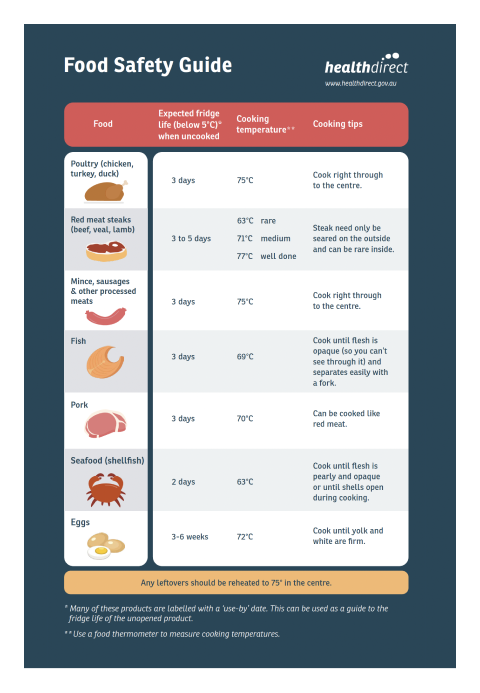
Note
The relevant Standard for dealing with food disposal in the food business is:
Food that requires disposal needs to be handled efficiently. Doing so will prevent any mix-up between foods, any cross-contamination, and any decaying or spoiling of the food.
Some examples of when food should be disposed of include if the food:
- Has been served to another person
- Has been sitting outside of its appropriate temperature control for a length of time
- Has passed its use by date
- Shows signs of perishing
- Has been cross-contaminated
- Has been exposed to environmental factors that may lead to food-borne illness (for example: an ill person has been in contact with the food, or the food has been in contact with a dirty surface).
Businesses and early childhood services handling food should have a system in place that ensures no mix up between food waste and other foods. The layout of the food preparation area should be designed so that there is no cross-over between food disposal/waste areas and food storage or preparation areas.
When disposing of food, it may be stored in garbage bins, compost bins, or food waste bins provided by the local council. Different types of food may have different disposal requirements. For example, liquids may not be suitable for garbage bins, whereas meat, dairy products, or contaminated food are unsuitable for compost bins. For example, raw vegetable peel can be safely disposed into the compost bin. It is a good idea to properly label each of the food disposal or compost bins available at your centre with the food that can be discarded inside. This will ensure that food disposal is managed in the most hygienic, efficient, and environmentally friendly way possible. For example, when disposing raw meat or contaminated food, it is advisable to place it in a plastic bag first and throw it away in the general waste bin.
Garbage should be stored and sealed correctly to prevent cross-contamination. It should always be stored away from other items in the kitchen to ensure it never comes into contact with food during preparation. Regular cleaning and sanitising of waste bins should also be carried out to minimise the risk of pest infestation.
Often, the business or early childhood service will need to demonstrate the procedure for handling food disposal and waste to their local council upon receiving council approval to operate. This is to ensure that safe and sanitary practices are followed.
The following information is an excerpt from Safe Food Australia (Division 3 — Food handling controls):
11 Food disposal
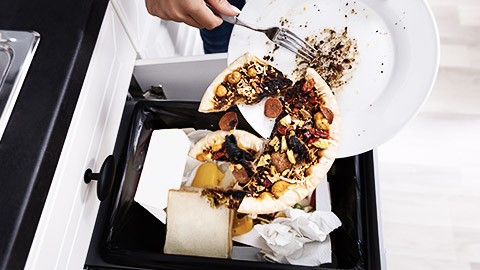
- A food business must ensure that food for disposal is held and kept separate until it is:
- destroyed or otherwise used or disposed of so that it cannot be used for human consumption;
- returned to its supplier;
- further processed in a way that ensures its safety and suitability; or
- ascertained to be safe and suitable.
- In subclause (1), ‘food for disposal’ means food that:
- is subject to recall;
- has been returned;
- is not safe or suitable; or
- is reasonably suspected of not being safe or suitable.
- A food business must clearly identify any food that is held and kept separate in accordance with subclause (1) as returned food, recalled food, or food that is or may not be safe or suitable, as the case may be.
- A food business must not sell food that has been already served to a person to another person unless the food was completely wrapped when served and has remained completely wrapped.
19 Cleanliness
- A food business must maintain food premises to a standard of cleanliness where there is no accumulation of:
- garbage, except in garbage containers;
- recycled matter, except in containers;
- food waste;
- dirt;
- grease; or
- other visible matter.
- A food business must maintain all fixtures, fittings and equipment, having regard to its use, and those parts of vehicles that are used to transport food, to a standard of cleanliness where there is no accumulation of:
- food waste
- dirt;
- grease; or
- other visible matter.
Read
- Every early childhood service must have a food safety policy. This is an example of a Nutrition and Food Safety Policy document.
- Here you can read more about food safety and the different types of food contamination, published by the Australian Institute of Food Safety. (scroll down to read the article without registering for an account)
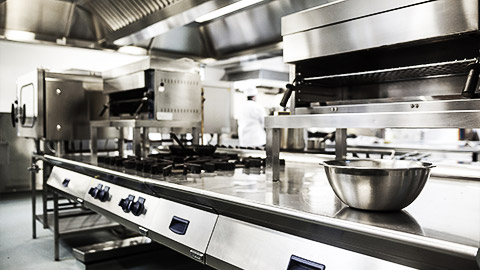
Note
The relevant Standard for dealing with proper use of equipment in the food business is:
It is important that all fixtures, fittings, and equipment used to prepare or serve food, are in good working order. Neglect of these items may result in them breaking down, which can compromise food quality and safety. For example, a faulty fridge, freezer, or temperature probe may cause food to be prepared or stored outside of its critical limits, which may cause a person to become ill when the food is consumed. Therefore, these items should be checked regularly and serviced or repaired as required to manage any risk to food safety.
The following information is an excerpt from Safe Food Australia (Division 5 — Cleaning, sanitising and maintenance):
21 (1) A food business must maintain food premises, fixtures, fittings, equipment, and those parts of vehicles that are used to transport food, in a good state of repair and working order having regard to their use.
23 Single use items
A food business must:
- in relation to all single use items, take all practicable measures to ensure they do not come into contact with food or the mouth of a person if they are:
- contaminated; or
- reasonably suspected of being contaminated; and
- in relation to single use items that are intended to come into contact with food or the mouth of a person:
- take all practicable measures to protect them from the likelihood of contamination until use; and
- not reuse such items
Use the following questions to check your knowledge.You can check the correct answer by clicking on the 'Answer' button:
-
What is the relevant Standard that applies to cleaning and sanitising?
3.2.2 –Food Safety Practices and General Requirements -
Where should dirty or contaminated materials be kept?
A designated area that is contained and covered, away from food preparation and serving areas. -
Why are pests and vermin a risk to food handling practices?
Due to the micro-organisms they may carry which can lead to potential illness. -
Other than the food premises, what other areas should be free from pests and vermin at a food business?
Vehicles used to transport food -
At what temperature should items such as poultry, fish, and eggs be kept in the fridge when they are uncooked?
Below 5℃

